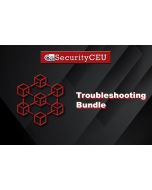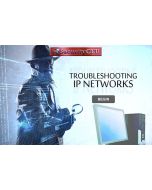Troubleshooting - Basic Tools and Techniques
Master the art of troubleshooting with our Troubleshooting - Basic Tools and Techniques course. Learn to identify and choose the right tools, perform conclusive tests, and develop a systematic testing plan. Gain the skills to approach troubleshooting logically and document your progress effectively.
Read more about the course in the course details below.
Our Troubleshooting - Basic Tools and Techniques course is designed to equip you with essential skills and knowledge for effective troubleshooting in various systems. Whether you're working in IT, electronics, or any field that requires problem-solving, this course will empower you to tackle issues with confidence.
Here's what you'll learn in this course:
Identify and Choose Tools: Understand the importance of having a well-equipped toolkit. Learn to identify and choose the appropriate tools for a basic troubleshooting kit. Discover how the right tools can make your troubleshooting process more efficient.
Select Testing Tools: Explore a range of testing tools available for different types of tests. Gain the ability to select the appropriate testing tools for specific testing scenarios, ensuring accurate and reliable results.
Perform Conclusive Tests: Learn how to perform conclusive tests using the selected tools. Develop the skills to execute tests that provide clear and definitive results, allowing you to pinpoint issues accurately.
Develop a Testing Plan: Understand the significance of planning before troubleshooting. Learn to create a testing plan that outlines the steps and procedures for diagnosing and resolving problems systematically.
Test with a Systematic Approach: Master the art of testing systems using a systematic and logical approach. Avoid guesswork and trial-and-error methods by following a structured process.
Document Progress: Learn the importance of documenting each phase of your testing. Discover how proper documentation can help track progress, share findings with colleagues, and ensure transparency in the troubleshooting process.
By the end of this course, you will be well-prepared to approach troubleshooting tasks with confidence and efficiency. You'll have the skills to identify and choose the right tools, perform conclusive tests, develop testing plans, and document your progress effectively.
Whether you're a beginner looking to build a solid foundation in troubleshooting or an experienced professional seeking to refine your skills, our Troubleshooting - Basic Tools and Techniques course is a valuable resource for your career advancement.
Enroll today and embark on a journey to become a proficient troubleshooter in your field.
This course is a component of the Troubleshooting Bundle. It may be taken on its own or ordered as part of the Troubleshooting training bundle for a lower overall cost.
Use the grid below to determine which states have CEU approval for this course, along with how many credit hours it has, and any other special instructions.
| State | Hours | Special Instructions |
| Florida | 1 | |
| Louisiana | 1 | |
| Mississippi | 1 | |
| New Jersey | 1 | This course is approved for 1.00 hours of continuing education by the NJ Fire Alarm, Burglar Alarm and Locksmith Advisory Committee. If you are submitting this course for CEUs in NJ, you must contact us with your NJ license number so we may provide you with the appropriate certificate upon completing the course. Please email support@securityceu.com or call 502-254-1590 when you have finished taking the online content. We will then create your NJ specific certificate and email it to you within 24 hours |
| South Dakota | 1 | This course is approved for 1.00 hours of continuing education by the SD Electrical Commission. If you are submitting this course for CEUs in SD, you must contact us with your SD license number so we may provide you with the appropriate documentation. Please email support@securityceu.com or call 502-254-1590. |
| Tennessee | 1 | |
| North Carolina | 1 | This course is approved for 1.00 hours of continuing education by the North Carolina ASLB. If you will be taking this course for CEUs in North Carolina, you must notify us and provide your license number and company name so we may submit the appropriate documentation. Please email support@securityceu.com or call 502-254-1590. |




